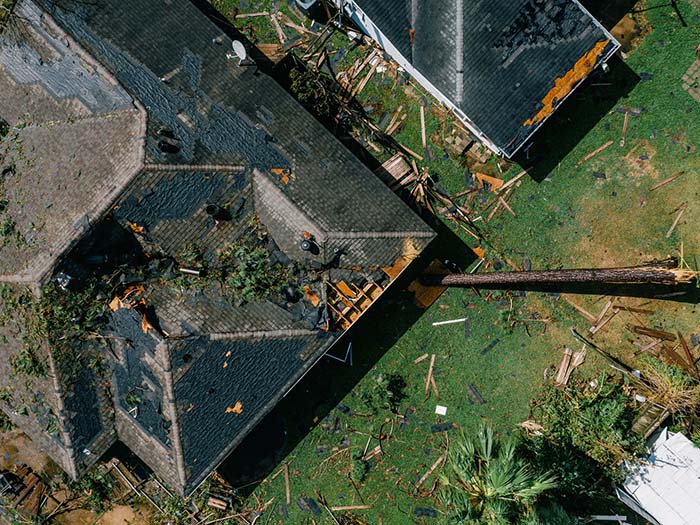Sponsored Content: Allied World
These 5 Actions Minimize Professional Liability Risk for Behavioral Health Workers in the Fight Against School Violence

In the first half of 2018 alone, school shootings averaged about one per week in the U.S. According to statistics compiled by the CDC in 2015, nearly 8 percent of students had been in a physical fight on school property within the previous year, and 21 percent reported being bullied. Six percent said they skipped at least one school day because they did not feel safe.
Schools are increasingly battling violence, and when injured parties seek to hold someone accountable, behavioral health specialists often find themselves on the front lines.
“If a behavioral health provider was treating a youth who commits an act of violence, any affected party could file a lawsuit claiming they did not take the proper steps to spot and mitigate the risk,” said Kristen Lambert, Esq., MSW, LICSW, FASHRM, Vice President Risk Management for Allied World.
“In addition to litigation, providers like psychiatrists, psychologists, social workers and counselors could face disciplinary action from their respective boards of registration, including license restriction or revocation.”
While behavioral health providers do play an important role in identifying and mitigating the potential for violence, they can’t prevent every incident. In order to provide the best care or guidance while also protecting themselves from liability, behavioral health specialists should follow these five steps:
1. Obtain informed consent for adolescent clients from the right authorities.

Kristen Lambert, Esq., MSW, LICSW, FASHRM, Vice President Risk Management for Allied World
If a client or patient makes a statement implying that he or she intends to commit violence, the behavioral health provider should know who they can share that information with if the client or patient is a child. Before they share such information, it is important to obtain informed consent from the person who has the legal authority for the child.
Absent informed consent or in an emergency situation, the provider may be limited in who he/she can communicate with regarding the threat. This may inhibit any effort to prevent a violent act from taking place and increases liability exposure for the behavioral provider.
The first step is identifying who has legal authority to provide consent.
“There may be a variety of folks involved in the child’s life. There are legal guardians, teachers, school counselors, a primary care physician, maybe a social worker,” Lambert said. “The behavioral health provider needs to know when it’s appropriate to have a dialogue with them, and that can only happen when informed consent is obtained at the outset.”
2. “If it wasn’t documented, it wasn’t done.”
Behavioral health providers should document their treatment of a patient.
“If something happens, the people affected by violence are going to look into that adolescent’s medical record. They’re going to see if the behavioral health specialist actually asked that child if he or she was a threat to themselves or others,” Lambert said.
“If that interaction was not documented, it may be more difficult to establish that the specialist adequately assessed the risk.”
Documentation can be as simple as a short narrative note in a medical record or a comprehensive assessment checklist. The type of record kept depends on the setting and scope of care provided. A psychiatrist working for a hospital system may use an electronic health record, for instance, while an outpatient social worker may use more informal means.
What’s most important, Lambert said, is “making sure they ask the question, ‘Are you a danger to yourself or others?’ And recording quotes directly from the adolescent rather than a subjective interpretation of their response.”
3. Determine your duty to warn about potential violence.
 Each state has specific regulations or case law outlining when health care providers’ duty to warn about potential violent behavior exceeds their commitment to patient privacy. Some states absolutely mandate that providers warn law enforcement if a patient indicates they will commit a violent crime, while others say they may provide warning, but are not required to.
Each state has specific regulations or case law outlining when health care providers’ duty to warn about potential violent behavior exceeds their commitment to patient privacy. Some states absolutely mandate that providers warn law enforcement if a patient indicates they will commit a violent crime, while others say they may provide warning, but are not required to.
“HIPAA allows providers to advise families, law enforcement or others whom they believe can lessen the threat,” Lambert said. “That’s federal law, but providers need to know what’s required by their state and be aware when state laws change.”
State legislation around duty to warn tends to follow laws regarding gun access and ownership. New Jersey, for example, recently strengthened its duty to warn standard as part of a new law limiting gun access to any person posing a threat to themselves or others.
4. Consult a legal professional about making predictive statements.
Schools may occasionally ask mental or behavioral health practitioners if a student presents a future risk of harm. If the student has been expelled, for example, the school may want a letter from the provider stating whether it is safe for them to return to school. Court systems may also ask for letters of support regarding youth who are in state custody.
“That puts the provider in a difficult situation,” Lambert said. “There may be indicators that the student is dangerous, or that they’re okay, but who knows what will happen tomorrow? It’s important that the provider first obtains advice before putting together a letter and when doing so, a letter should only comment on the student’s current presentation, not what he or she may or may not do in the future.”
Consulting a lawyer can help determine how much risk a practitioner assumes by providing predictive information, and how a letter outlining the threat of future harm should be worded.
5. Develop an incident response plan.
If the worst happens, law enforcement officers and distraught parents will be knocking at the behavioral health provider’s door, demanding answers.
“A sheriff or constable may ask for access to the youth’s medical records. Reporters may reach out. Depending on the severity of the act, there may be a full investigation. So it’s important for the provider to know what information they can disclose and to whom,” Lambert said.
Providers should contact an attorney and their insurance company to avoid exposing themselves to unnecessary professional liability risk.
“We might advise them not to talk to the media or to other providers, or to share any information where there is a lack of privilege. Any conversation they have with someone other than their attorney could be discoverable evidence used in the investigation or in a claim against the provider,” Lambert said. “Their instinct is to help, but it is important that they do not expose themselves to increased risk.”
Access to Expert Advice Mitigates Liability Risk
Understanding their professional liability exposure can help behavioral health professionals do everything they can to prevent violence by at-risk youths, while also protecting themselves from litigation down the road. Because of the many legal and ethical nuances of treating youth at risk for violence, turning to an experienced consultant can help make critical decisions easier.
Allied World, through its strategic partnership with American Professional Agency, Inc., is endorsed by the American Psychiatric Association, sponsored by the American Academy of Child and Adolescent Psychiatry and is the sole preferred provider for the American Psychological Association where they provide expertise in risk management for mental and behavioral health providers. Lambert herself began her career as a clinical social worker working in both hospitals and outpatient clinics before obtaining a law degree, practicing as a lawyer and a risk manager.
“We provide educational content for the members of the professional organizations, in addition to our insureds,” Lambert said.
“We also provide both proactive advice and incident reporting hotlines to our insured behavioral health providers. If they encounter a situation that they’re not sure how to respond to, they can call any time and get risk management guidance. Our goal is to provide the services and coverages necessary to allow behavioral health providers to focus on practicing and spend less time worrying about their exposures.”
To learn more, visit https://www.alliedworldinsurance.com/risk-control-usa-healthcare-liability
This information is provided as a general overview for agents and brokers. Coverage will be underwritten by an insurance subsidiary of Allied World Assurance Company Holdings, GmbH, a Fairfax company (“Allied World”). Such subsidiaries currently carry an A.M. Best rating of “A” (Excellent), a Moody’s rating of “A3” (Good) and a Standard & Poor’s rating of “A-” (Strong), as applicable. Coverage is offered only through licensed agents and brokers. Actual coverage may vary and is subject to policy language as issued. Coverage may not be available in all jurisdictions. FrameWRXSM services are provided by third-party vendors via a platform maintained in Farmington, CT by Allied World Insurance Company, a member company of Allied World. © 2018 Allied World Assurance Company Holdings, GmbH. All rights reserved.
This article was produced by the R&I Brand Studio, a unit of the advertising department of Risk & Insurance, in collaboration with Allied World. The editorial staff of Risk & Insurance had no role in its preparation.










